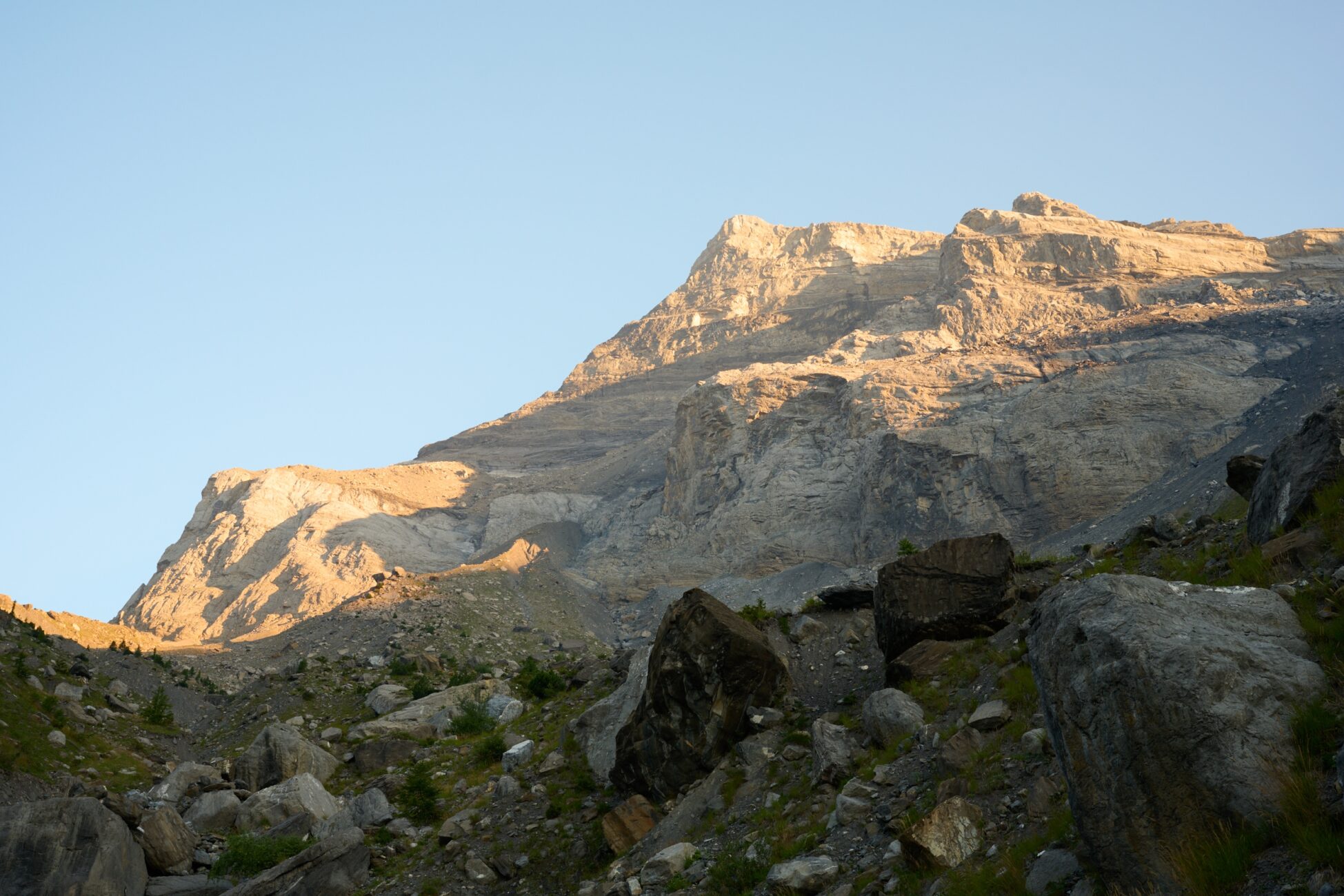From Aline, his first novel, to the last lines of his Diary, written a few days before his death, Ramuz consistently expressed the idea that men are separated from each other, walled up in their solitude and. unable to understand each other, talk to each other, or love each other. The tragedy is played out in the heart of their daily lives, and in the midst of nature’s beauty and grandeur. Ramuz wrote a number of tales for frankly commercial purposes, drawing on Valais legend and set in the rugged, magnificent mountains. In the midst of these majestic landscapes, destiny is embodied in natural elements that provoke disasters and reduce men to the mere playthings of fate. In La Grande Peur dans la montagne (1926) and Derborence (1934), the mountain mirrors and echoes human tragedy, as a threatening reminder of human fragility.
« The mountains are about to turn pink. The mountains are falling on us. It is a fine sight, but it is nasty. »
Derborence, 1934
